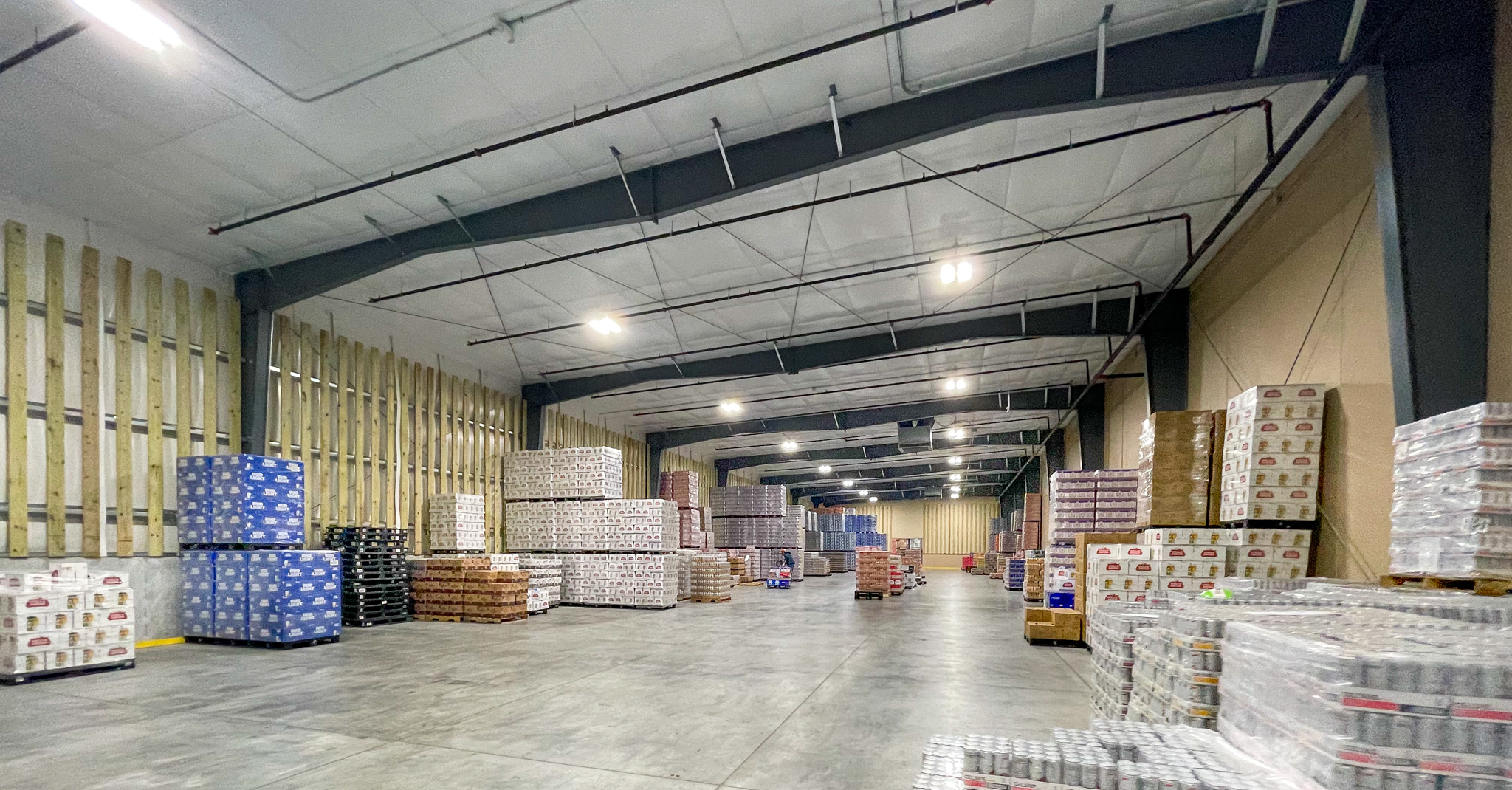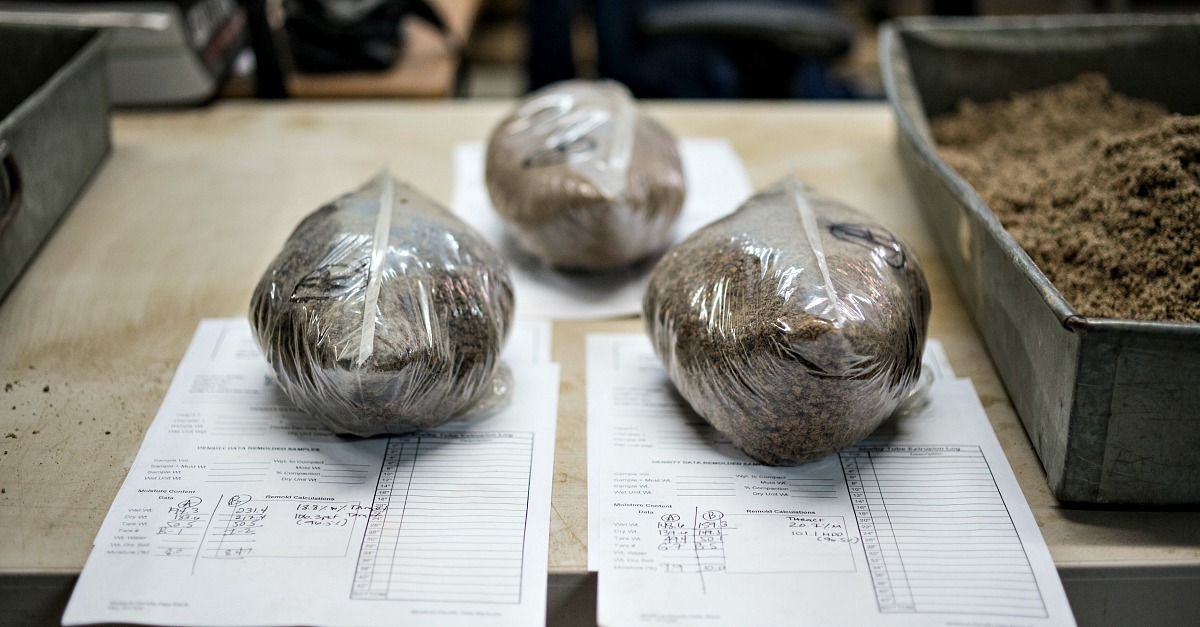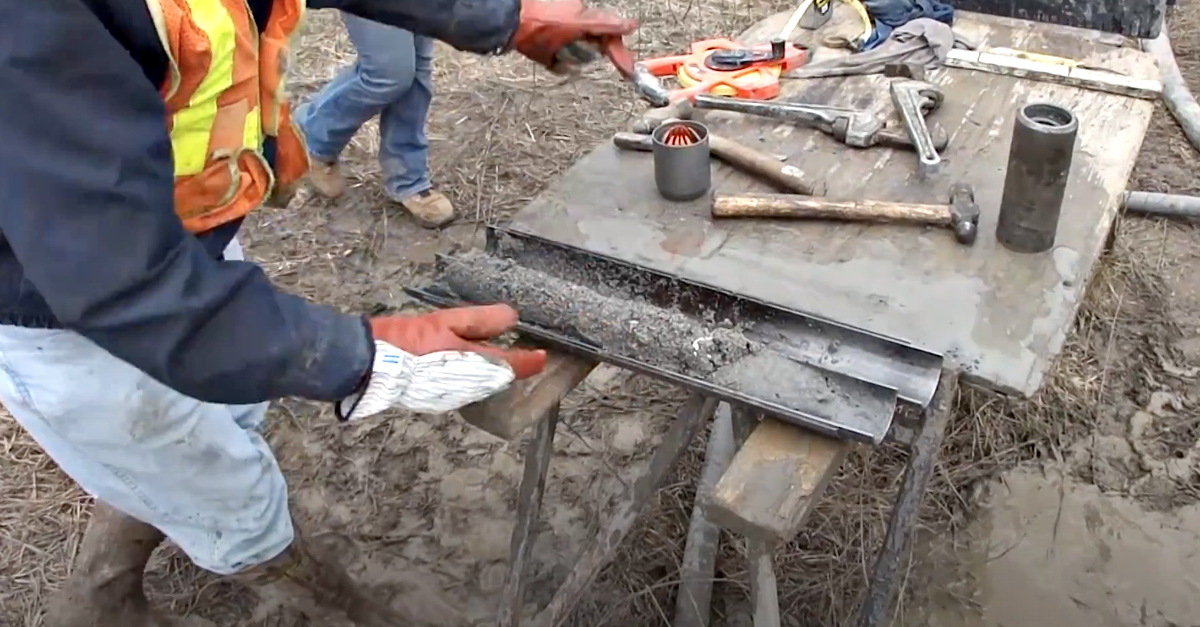COUNTY BEVERAGE COMPANY – 1290 SE Hamblen Rd, Lee’s Summit, MO 64081
Expanding a Community Business as a Trusted Partner
Over the past two decades, County Beverage Company has evolved into a symbol of Lee’s Summit’s rising economic profile. Businesses across the area depend on the powerhouse beverage distributor for everything from popular beer brands to a variety of energy drinks and other non-alcoholic beverages.
Multiple site expansions over the years speak to County Beverage Company’s growing success. In 2019, another tidal wave of new products pointed to the need for even more space and bigger operations. Alpha-Omega Geotech was proud to collaborate with A.L. Huber General Contractor, the Lee’s Summit Economic Development Council, and County Beverage Company’s long-time owners to tackle a 26,000 foot expansion.
The plan included additional warehouse and storage space, more cooler space, new loading docks, and adjacent pavement. It all came together in new construction wrapped around the west and south sides of the existing facility’s footprint. AOG was called in to investigate the soil and test key construction materials that would support the expansion and become critical first steps in bringing the future of the treasured community business into focus.
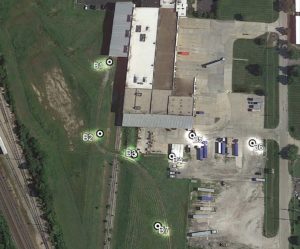
AOG boring hole markers roughly outline the expansion area wrapping around the existing County Beverage Company footprint.
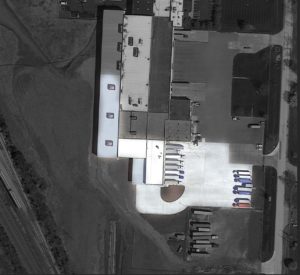
Post construction – highlighted 2019-2021 expansion areas at County Beverage Company.
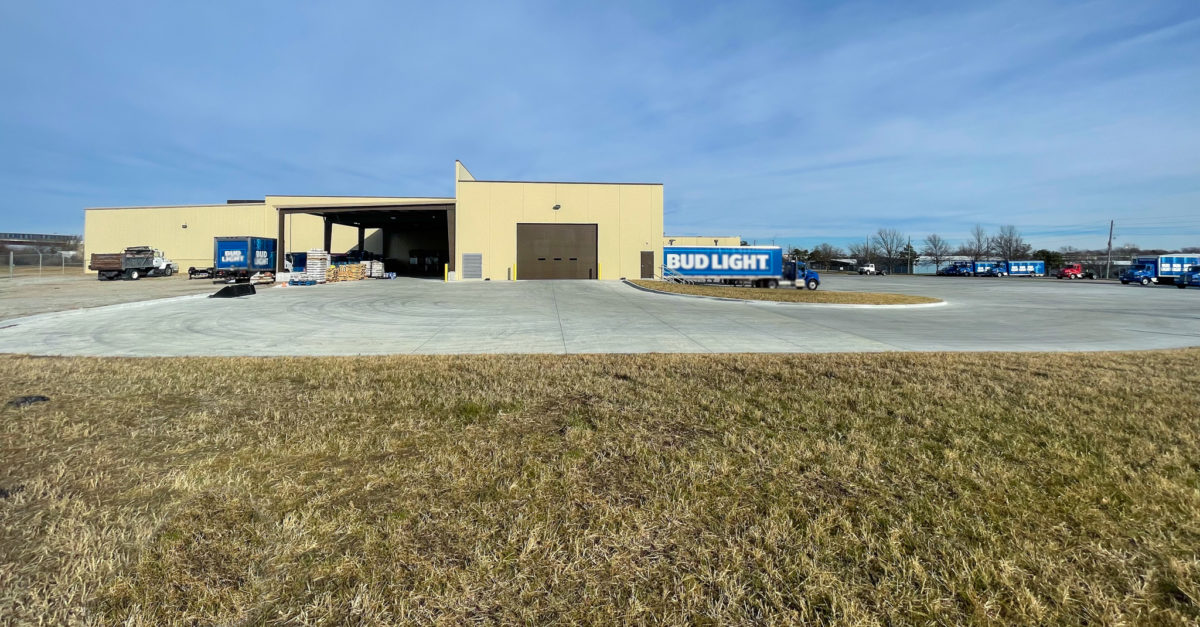
Post construction – south view of County Beverage Company
The Value of Validating Subgrade Conditions
Like most of the Greater Kansas City area, the subgrade in Lee’s Summit isn’t as simple and straightforward as you might think. AOG President Allan Bush says characteristics vary across short distances and are changing all the time.
“You don’t want to make too many assumptions about the subgrade across Lee’s Summit,” says Bush, looking at a satellite map of the area. “It’s pretty unpredictable. For example, shallow rock is not uncommon. Just drive along 470 and you can see the outcroppings.”
The discovery of shallow rock layers at a build site can be a showstopper, raising the possibility of difficult digging and even blasting to make room for support construction and utilities beneath a structure. Fortunately, County Beverage Company’s property didn’t appear to have those types of challenges, but A.L. Huber wanted AOG to make sure. A less experienced general contractor team might have been tempted to just rely on old soil data from the site’s original construction in the 1990s, but Bush says A.L. Huber knew better.
“Huber doesn’t take chances. They knew the subgrade could be different even a few feet from the existing footprint. Rock could be present and drainage patterns could have changed over the years and reshaped the soil’s characteristics. And you always want to find out about those kinds of things before construction begins rather than risking an untimely surprise.”
“And if you do find differences in the subgrade beneath the existing structure and the expansion zone, you’re looking at having to manage the risk of each area settling differently,” adds AOG Engineering Department Manager Garic Abendroth. “Dealing with shallow rock gets expensive, and so does drilling piers if the new construction is on soft and mushy soil. So figuring out whether you’ve got challenges prior to construction is definitely going to put you in the best position to deal with them.”
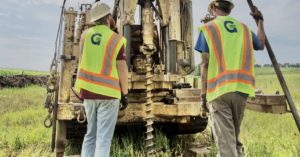
Drilling is the only way to uncover an accurate picture of a subgrade’s current conditions.
Abendroth says the AOG team’s soil borings confirmed good news. The same stiff clay beneath County Beverage Company’s existing footprint extended across the area where the expansion was planned. “It was consistent and fairly average soil. A good fit for straight-forward development and foundation construction. No surprises for the project plan or the budget, which is very useful information for the general contractor upfront. It allows them to nail down foundation costs and plan around them.”
Figuring out the best way to match the new foundation to the existing foundation had a lot to do with the nature of operations at County Beverage Company. AOG Business Director Blake Bennett says the company could afford to do without a perfect match and the added expense that goes with it.
“It’s a warehouse and storage environment. You’ve got forklifts with pallets rolling over joints between one slab and the other, so as long as the foundations are reasonably even, you’re going to be just fine. County Beverage was able to skip the cost of a more precise match, unlike businesses using highly sensitive technologies where seamless, flatness is critical.”
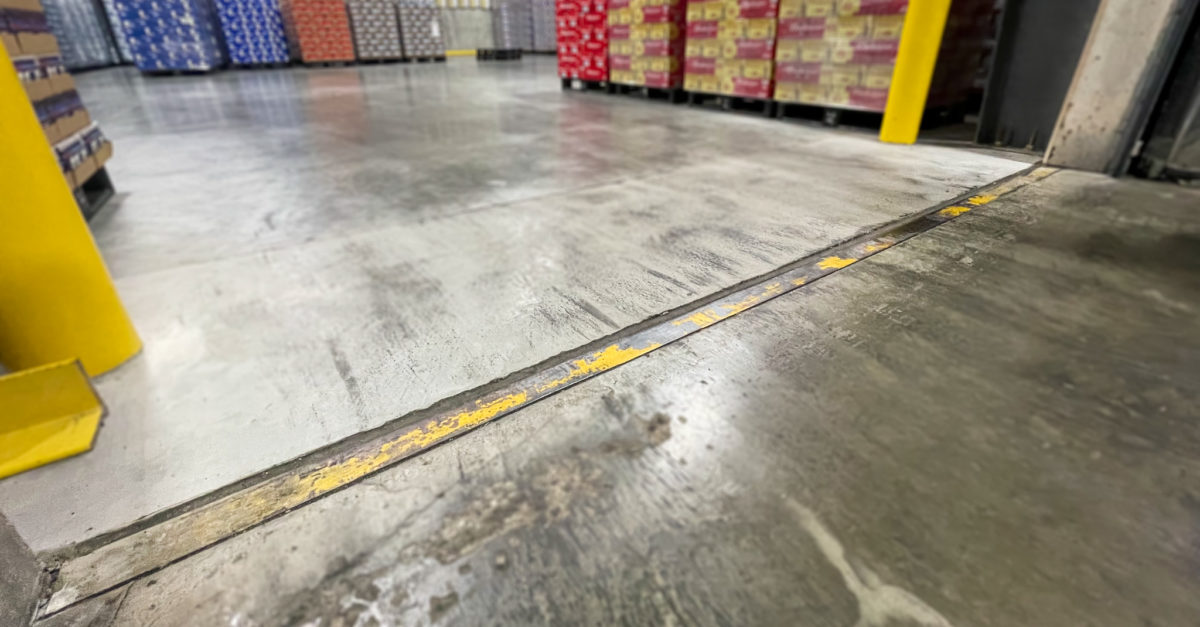
Where old meets new. Existing warehouse space leads to newly constructed space.

New cooler space inside County Beverage Company.
Engineering Key Efficiencies
Geotechnical engineering is fundamentally focused on ensuring a solid start to safe construction. Getting a project out of the ground without worry of instability is priority number one, but that’s not the only way Geotech work can deliver value. Engineers can also offer a construction team and project owner smart opportunities to save substantial amounts of time and money.
“It’s not a good idea to skip Geotech services even if you feel confident your project is on predictable, high quality ground,” says Abendroth, summing up many years of experience. “You may think cutting out the role of Geotech is an easy way to trim your construction budget, but it could be the opposite.”
Abendroth points to the value of determining a soil’s load-bearing capacity. Building Code requirements limit the assumed capacity of untested soil to a very low number. Designers must stick to the limit without proof of greater soil strength. The only way to get that proof is through Geotechnical Investigation and testing.
“Building Code limits rarely match the reality of the soil. They are much more conservative because that’s the nature of the Codes. Without scientific analysis, you’re making assumptions about what the soil can support. So, Building Codes require safe assumptions. Extremely safe. That can mean paying for more construction support than you actually need.”

A Geotech advantage: testing for scientific proof of soil strength that safely exceeds Building Code default limits.
When a Geotechnical team determines the in-place load-bearing capacity of soil at a build site and discovers favorable conditions, adjustments can be made to optimize construction. Bennett says greater load-bearing capacity can mean less construction material and less time putting it together.
“If a Geotechnical analysis determines the soil is stronger than the Building Code assumption, you may not have to spend as much to make wide foundation footings. You can narrow the dimensions and cut your concrete and rebar costs significantly. It’s not a shortcut, it’s delivering the same load support at a lower cost by taking advantage of the soil’s full strength.”
“The savings in the County Beverage Company expansion amounted to real money and easily offset the cost of our services,” remembers Abendroth. “The soil was considerably stronger than the Building Code assumption. We made the most of it, and the result was lower material costs and less time moving everything around, which helped streamline the construction schedule.”
Bush says a clear understanding of the soil’s strength and overall character also benefited construction of the large paved area around the project. “Pavement is only as good as the ground it sets on. Deciding how you want pavement to perform, from its strength to its life expectancy, is a complicated materials calculation that begins with the soil. County Beverage Company sees non-stop heavy truck activity, especially around those loading docks, so they were very interested in knowing what was possible without overspending. The composition of the soil was a big factor, and AOG’s testing helped maximize the pavement design.”
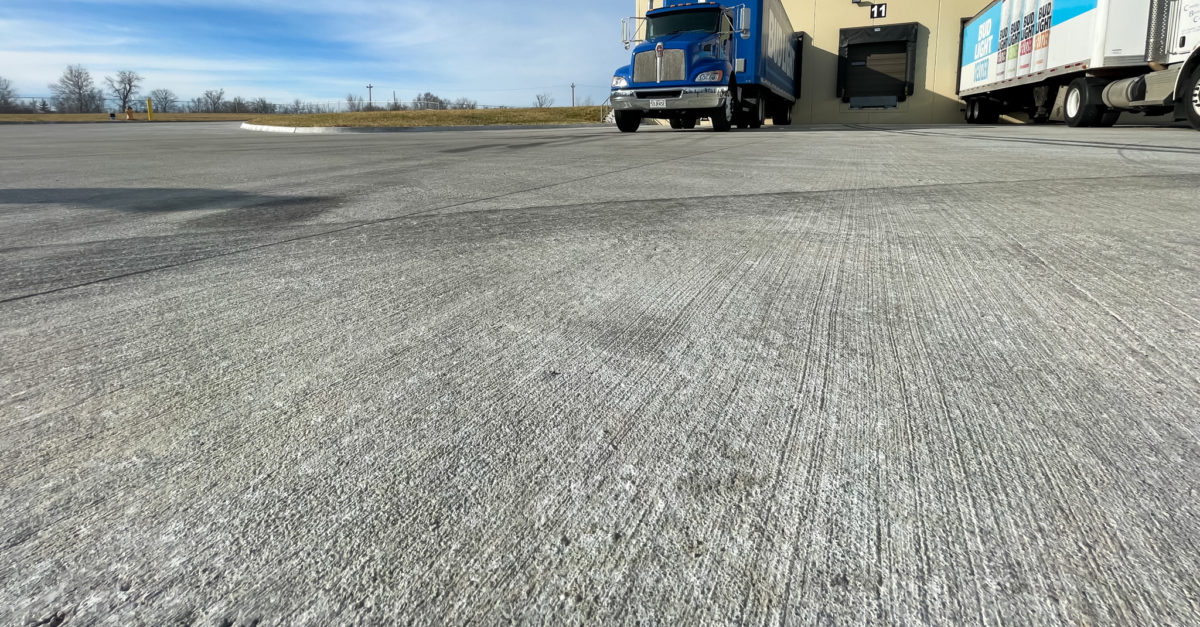
Subgrade conditions are a key factor in designing pavement that will last under industrial traffic.
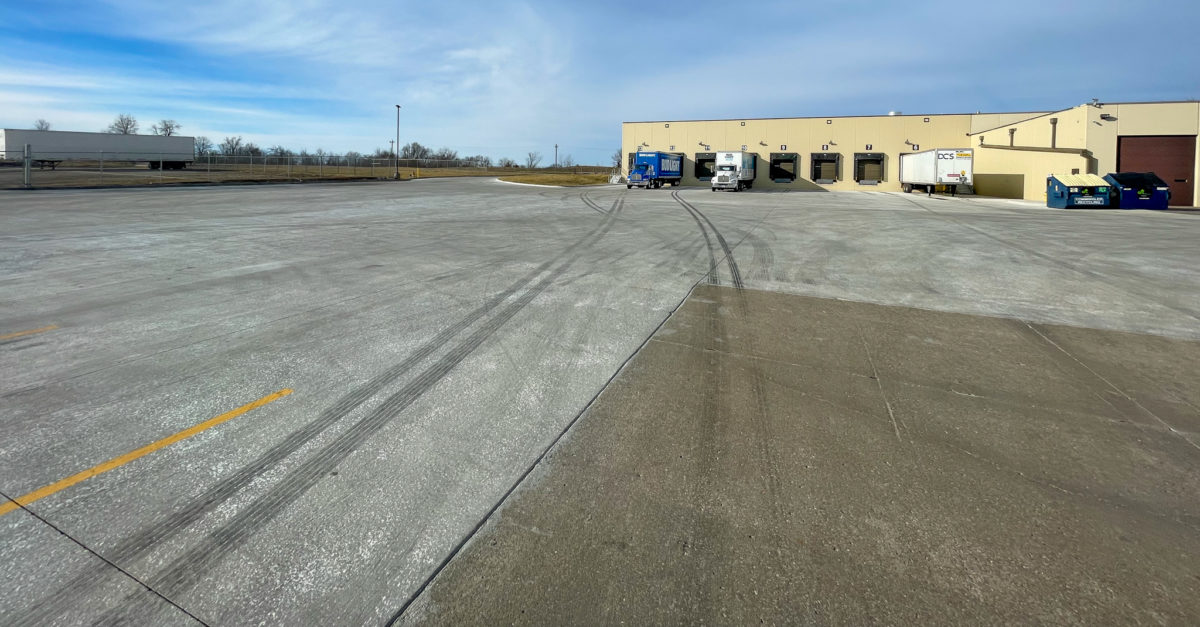
East view of loading dock area at County Beverage Company.
When it came to Special Inspections during the early stages of construction, the project team opted to stick with AOG to reap the benefits of having the same firm that investigated the subgrade hand off to its own technicians.
“That’s the way it usually works with bigger, more experienced general contractors,” says Bennett. “They know that the continuity streamlines the process. Our engineers and our field technicians work very closely together and understand each other. If conditions change during construction, we’ll get things figured out faster and keep the project on track. When you split up Geotechnical services and inspections among two different firms, you’re risking confusion and even disagreement that can really slow down progress.”

Painstaking inspections work: making sure construction manifests exactly as planned.
AOG inspection technicians stayed in constant contact with our engineers as work proceeded from virgin soil beneath the slab, to construction of footings and the slab itself. They monitored excavations and verified load bearing capacity of footings before concrete was poured. They also tested concrete mixtures and made sure the rebar within the concrete was properly sized and spaced.
Above ground, our field techs checked welding and other critical connections as framing came together. “Special Inspections are a requirement,” says Bennett, a long-time veteran of the highly-disciplined work. “But established project teams also embrace them as important proof of high-quality construction.”
A Celebrated Community Achievement
By summer of 2021, the County Beverage Company expansion on Bailey Road in Lee’s Summit was complete, overcoming even pandemic hurdles and supply chain kinks to cross the finish line. MetroWireMedia and the Lee’s Summit Economic Development Council (LSEDC) both noted the success of the collaborative effort. And County Beverage Company President Mike Pizzichino was quick to praise AOG and A.L. Huber in an interview with the LSEDC. “They do a nice job, really good communication,” said Pizzichino, “I’d highly recommend both companies.”
A.L. Huber Vice President Keith Dorrian also talked with the LSEDC about his company’s long relationship with AOG. “We’ve partnered together on many successful projects,” said Dorrian. “They’re a great partner and always provide great service to the project team and our mutual clients.”
Partnerships don’t get much better than the one Alpha-Omega Geotech shares with A.L. Huber. Like us, they believe in building communities, not just completing projects. As LSEDC investors, we both want to see Lee’s Summit businesses thrive and become all they can be. AOG’s portfolio includes both public and private projects in Lee’s Summit ranging from fire stations and hospitals to car dealerships and the extraordinary Downtown Market Plaza.
“County Beverage Company is one more piece of Lee’s Summit’s success story. It’s part of their history going back more than 20 years and it will be part of their future,” says Bush. “The owners and their family of employees have worked hard to be successful and we’re proud of the fact that we’ve been able to support them.”
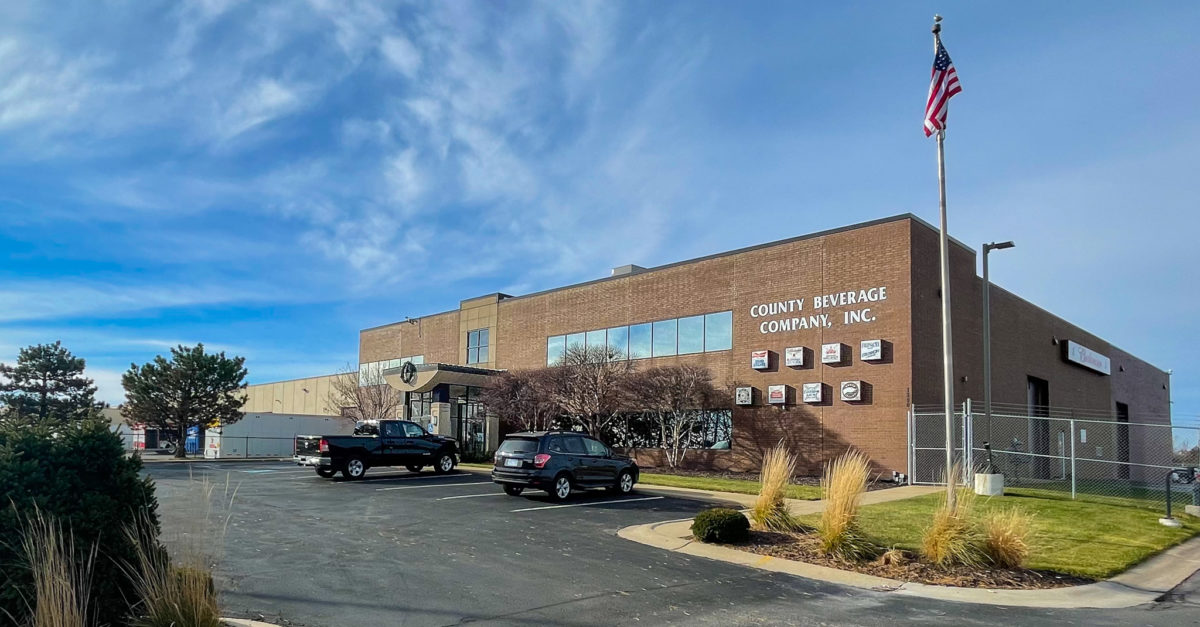
County Beverage Company in Lee’s Summit, Missouri
Project Partners:
A.L. Huber General Contractor

